
|
 |
 |
 |
 |
|
|
|
MGL Avionic Glass Cockpit Stratomaster ENIGMA EFIS Généralités
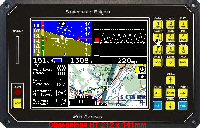
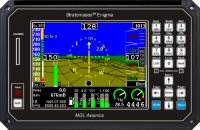
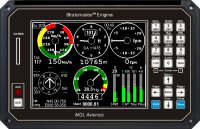
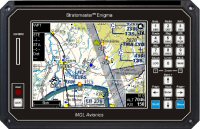
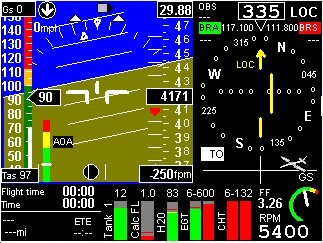

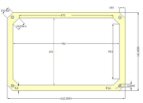
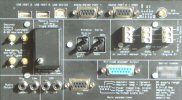
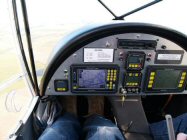 Klicken Sie auf die Bilder um sie zu vergrößern.
Der Stratomaster Enigma ist das führende farbige "glass cockpit system" für nicht zertifizierte Flugzeuge vom Ultraleicht bis zur Zweimotorigen und zum Hubschrauber.
Dieses unglaublich leistungsfähige Instrument geht weiter als jedes EFIS, das zuvor hergestellt wurde. Enigma ist nicht nur das am weitesten fortgeschrittene EFIS auf dem Planeten, es ist gleichzeitig das flexibelste, am weitesten konfigurierbare und offenste heute verfügbare System. Haben wir erwähnt, daß es gleichzeitig das preisgünstigste ist? Nun, jetzt haben wir...
Enigma ist für jeden! Wir schreiben keine Bildschirmkonfiguration mit festgelegten Funktionen vor. Jeder Pilot ist unterschiedlich. Jedes Flugzeug ist unterschiedlich. Enigma liefert 9 frei anwählbare Bildschirme, die Sie ganz nach Ihren Wünschen aus einer Bibliothek von Hunderten von Instrumenten und Funktionen zusammenstellen können. Verwenden Sie die mitgelieferten Standardbildschirme, ändern Sie sie ab oder erstellen Sie Ihre eigenen. Tauschen Sie sie mit anderen Enigma Piloten.
Der Eigenbau eines Flugzeugs hat eine neue Dimension bekommen. Das EFIS hat Ihnen die Möglichkeit geraubt, Ihr eigenes Panel zu designen. Das Enigma EFIS gibt Ihnen diese Freiheit zurück.
Bitte beachten Sie unsere animierten Darstellungen auf der
"Darstellungen" seite
Load a schematic describing a simple ENIGMA system architecture.
Load a schematic describing a complete ENIGMA system architecture.
Load a schematic describing the ENIGMA database generation process. (Click here for PDF format)
Möchten Sie Enigma ausprobieren? Sie können dies sofort tun. Laden Sie den voll funktionsfähigen „Enigma simulator and screen designer“ herunter. Anforderungen: PC mit mindestens Windows NT, 2000 oder XP mit Active-X installiert. Der Enigma Simulator ermöglicht es Ihnen, ein nahezu voll funktionsfähiges, virtuelles Enigma auf Ihrem Computer zu betreiben, komplett mit simuliertem GPS und Moving Map. Flugkarten können mit unserem Programm Map Maker, daß Sie hier herunterladen können, selbst erstellt oder von MGL Avionics bezogen werden. Beachten Sie bitte unseren Download Bereich.
Klicken Sie auf die Bilder um sie zu vergrößern.
Der Stratomaster Enigma ist das führende farbige "glass cockpit system" für nicht zertifizierte Flugzeuge vom Ultraleicht bis zur Zweimotorigen und zum Hubschrauber.
Dieses unglaublich leistungsfähige Instrument geht weiter als jedes EFIS, das zuvor hergestellt wurde. Enigma ist nicht nur das am weitesten fortgeschrittene EFIS auf dem Planeten, es ist gleichzeitig das flexibelste, am weitesten konfigurierbare und offenste heute verfügbare System. Haben wir erwähnt, daß es gleichzeitig das preisgünstigste ist? Nun, jetzt haben wir...
Enigma ist für jeden! Wir schreiben keine Bildschirmkonfiguration mit festgelegten Funktionen vor. Jeder Pilot ist unterschiedlich. Jedes Flugzeug ist unterschiedlich. Enigma liefert 9 frei anwählbare Bildschirme, die Sie ganz nach Ihren Wünschen aus einer Bibliothek von Hunderten von Instrumenten und Funktionen zusammenstellen können. Verwenden Sie die mitgelieferten Standardbildschirme, ändern Sie sie ab oder erstellen Sie Ihre eigenen. Tauschen Sie sie mit anderen Enigma Piloten.
Der Eigenbau eines Flugzeugs hat eine neue Dimension bekommen. Das EFIS hat Ihnen die Möglichkeit geraubt, Ihr eigenes Panel zu designen. Das Enigma EFIS gibt Ihnen diese Freiheit zurück.
Bitte beachten Sie unsere animierten Darstellungen auf der
"Darstellungen" seite
Load a schematic describing a simple ENIGMA system architecture.
Load a schematic describing a complete ENIGMA system architecture.
Load a schematic describing the ENIGMA database generation process. (Click here for PDF format)
Möchten Sie Enigma ausprobieren? Sie können dies sofort tun. Laden Sie den voll funktionsfähigen „Enigma simulator and screen designer“ herunter. Anforderungen: PC mit mindestens Windows NT, 2000 oder XP mit Active-X installiert. Der Enigma Simulator ermöglicht es Ihnen, ein nahezu voll funktionsfähiges, virtuelles Enigma auf Ihrem Computer zu betreiben, komplett mit simuliertem GPS und Moving Map. Flugkarten können mit unserem Programm Map Maker, daß Sie hier herunterladen können, selbst erstellt oder von MGL Avionics bezogen werden. Beachten Sie bitte unseren Download Bereich.
Beachten Sie bitte ebenfalls die Beschreibungen der einzelnen Programme in unserem "Download" Bereich.
Scrhreiben sie sich in unsere MGL informationsliste ein
Fordern Sie einen Katalog mit Preisliste an bei MGL Avionics 
|
MGL Avionics Glass Cockpit Stratomaster ENIGMA EFIS


 Das neue Enigma ist universell einsetzbar und alles was man braucht, um die meisten der gängigen Flugzeugmotoren zu überwachen, vom kleinen Zweitakt Ultraleicht-Motor über mittelgroße Viertaktmotoren wie Jabiru, Hirth, Rotax, bis zu Continental und Lycoming und natürlich auch den meisten der für den Gebrauch in Flugzeugen adaptierten Automotoren.
Motorenüberwachung mit zwei RDAC Einheiten (für zwei Motoren bzw. einer Vielzahl von Kanälen).
Überaus weitgehend konfigurierbares Motoren- Benzin- und Flugmanagement.
Hunderte von frei konfigurierbaren Instrumenten und Anzeigeeinheiten in verschiedenen Formen wie traditionellen Instrumenten, Balkengrafiken, Digitalanzeigen, Horizontansichten, HSI, Moving Maps, etc.
9 programmierbare Bildschirme
, die mit einem PC-basierten System angepaßt werden können.
Ein kostenloses
PC Programmpaket
kann genutzt werden, um Ihre Ansichten bequem zuhause zu erstellen und an Ihre individuellen Bedürfnisse anzupassen. Mit einem Knopfdruck können die erstellten Ansichten später an Ihr Enigma übertragen werden.
Ein PC Programm erlaubt den Import von beliebigem Kartenmaterial in gängigem Windows Bildformat zum Gebrauch in Ihrem Enigma. Von gescannten Karten über Handzeichnungen bis zu kommerziellen Kartenquellen kann alles genutzt werden. Satellitenbasierende Terraindaten werden hier ebenfalls frei geliefert und importiert.
Beachten Sie hierzu die Bildschirmansichten.
Unterstützung für MGLs optionale Kompaß- und Lagesensoren SP-x
Referenz : MG_ENIGMA
Fordern Sie einen Katalog mit Preisliste an bei MGL Avionics
Das neue Enigma ist universell einsetzbar und alles was man braucht, um die meisten der gängigen Flugzeugmotoren zu überwachen, vom kleinen Zweitakt Ultraleicht-Motor über mittelgroße Viertaktmotoren wie Jabiru, Hirth, Rotax, bis zu Continental und Lycoming und natürlich auch den meisten der für den Gebrauch in Flugzeugen adaptierten Automotoren.
Motorenüberwachung mit zwei RDAC Einheiten (für zwei Motoren bzw. einer Vielzahl von Kanälen).
Überaus weitgehend konfigurierbares Motoren- Benzin- und Flugmanagement.
Hunderte von frei konfigurierbaren Instrumenten und Anzeigeeinheiten in verschiedenen Formen wie traditionellen Instrumenten, Balkengrafiken, Digitalanzeigen, Horizontansichten, HSI, Moving Maps, etc.
9 programmierbare Bildschirme
, die mit einem PC-basierten System angepaßt werden können.
Ein kostenloses
PC Programmpaket
kann genutzt werden, um Ihre Ansichten bequem zuhause zu erstellen und an Ihre individuellen Bedürfnisse anzupassen. Mit einem Knopfdruck können die erstellten Ansichten später an Ihr Enigma übertragen werden.
Ein PC Programm erlaubt den Import von beliebigem Kartenmaterial in gängigem Windows Bildformat zum Gebrauch in Ihrem Enigma. Von gescannten Karten über Handzeichnungen bis zu kommerziellen Kartenquellen kann alles genutzt werden. Satellitenbasierende Terraindaten werden hier ebenfalls frei geliefert und importiert.
Beachten Sie hierzu die Bildschirmansichten.
Unterstützung für MGLs optionale Kompaß- und Lagesensoren SP-x
Referenz : MG_ENIGMA
Fordern Sie einen Katalog mit Preisliste an bei MGL Avionics
|
MGL Avionics Glass Cockpit Stratomaster ENIGMA EFIS Features


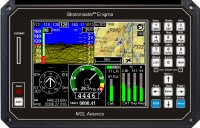


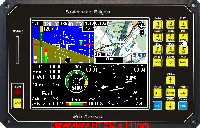
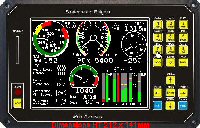
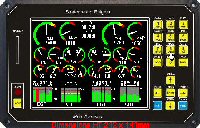
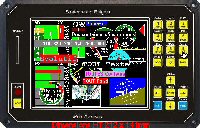
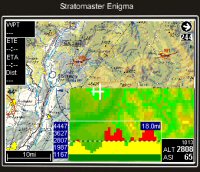



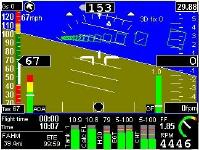
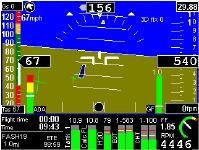
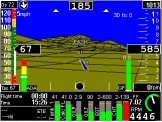
 Overview of Enigmas current capabilities both existing and in the works for implementation soon.
Dimensions: 212x141 mm. Mounting depth 70mm (120mm including connectors & cables). Pannel cut 192x121 mm.
Download the cutting template
Weight 900g plus RDAC_VD 175g or RDAC_X 290g (with 3m cable length).
Display: QVGA (330x240) compensated passive 5.7 inches (14.5cm) diagonal, brigthness 1000 nit (cd/m2), with light guide.
viewing angle: Vertical +20° to -30°, Horizontal -50° to +50°
Adjustable display contrast and backlight. Day and night settings for both.
User interface: 20 keys including full numeric keypad and navigation keys.
ARM 926JE processor at 200 Mhz. 4Mbyte 32 bit Flash memory for program storage and execution. 4Mbyte of 32 bit, fully static, battery backed RAM. 2Mbyte flash boot disk. 2Mbyte flash storage for voice samples.
Atmega 128 processor for general data acquisition and audio synthesis (slave processor).
16 channels GPS Receiver with dedicated ARM 7 processor.
Low power consumption, large input voltage range: 6-28VDC, 0.25-0.8A at 12V depending on backlight brightness setting.
Contains all circuitry to connect and charge a 12V lead acid external backup battery.
Startup time about 4 seconds.
Altitude to 40 000 ft (12 195 m) calibrated, 1ft dynamic resolution.
Airspeed ASI analog and digital, TAS digital.
VSI +/- 9 990 ft/minute (50.7 meters per second) range.
Vario Analogique. Echelle 10m/S 2000 ft/min. Affichage logarithmique.
Two pressure transducers for AOA (Angle Of Attack indication).
Glide and climb ratio to 1/99.
Density altimeter
TAS True Air Speed.
GPS Speed.
Wind vector calculation (requires SP-2 Compass).
Air distance made good.
Ambiant temperature.
Hobbs meter, presetable to current engine time.
Maintenance timer.
Airframe Maintenance timer.
Automatic Flight detection.
Flight time.
Local Time. UTC time. Sunrise & Sunset.
Chronometer.
Voltmeter.
Barometer for ambient pressure.
Alticoder output for mode "C" transponder.
Check-lists , user programmable with text files.
Recording facility for primary flight data, GPS positions, engine monitor. Large capacity recording using SD card.
Downloadable flight log using SD/MMC card.
Metric, Imperial or U.S units.
Visual, audio and voice alarms and an alarm contact to connect an external warning.
Voice prompts in addition to visual and external alarms. Voice prompts can be recorded by user on PC to support different languages.
"Copilot" mode with voice prompts under a programmable airspeed.
Audio outputs for Intercom and Speaker.
GPS moving map, map viewing. Supports Raster and Vector maps.
Terrain awareness with satelitte or survey based terrain elevation data
3D synthetic vision displays (with terrain data)
Autopilot support. Connect any NMEA compatible autopilot (RMB, RMC and GGA messages) i.e.
TRIO AVIONICS.
Optional wireless BlueTooth to broadcast GPS & PA data to an external PC or PocketPC.
Detailed engine monitoring EGT, CHT, oil and cooling liquid temperature, oil pressure, fuel level and flow, Fuel pressure, RPM, Carb icing, etc... Entirely programmable to adapt to user's needs. See the manual of the Remote Data Acquisition Computer.
Engine monitoring using up to two
RDAC units (dual engines or many channels). Supports RDAC XB, XD and VD.
Direct fuel flow calculation from injector opening time on injected engines (i.e. HIRTH).
Recording facility for primary flight data, GPS positions, engine monitor, attitude (if attitude sensor connected). Large capacity recording using SD card, depending on file size. For example, 500Mb allow storage of 300 to 1000 hours of data, depending on stored parameters. See ENIGMA recording configuration.
Recorded data can be postpocessed, for example converted to text format and used in Excel. A conversion utility and recording format documentation are available on the download page.
VOR/DME, ILS, Glide slope, localizer with Garmin radio NAV(compatible with SL30 protocol).
Programming of compatible connected VHF (Garmin SL30 & SL40, Filser).
Terrain Awareness Warning System.
Moving map "track up" displays for vector and raster maps, vector maps with airspaces and airspace awareness and alerts
World wide vector base maps with urban areas, roads, rivers, railway lines, power lines, coastal lines, towns and places, inland water bodies
3D HITS (Highway in the sky), 3D approach onto runway (GLS approach) with 3D glide slope
Overview of Enigmas current capabilities both existing and in the works for implementation soon.
Dimensions: 212x141 mm. Mounting depth 70mm (120mm including connectors & cables). Pannel cut 192x121 mm.
Download the cutting template
Weight 900g plus RDAC_VD 175g or RDAC_X 290g (with 3m cable length).
Display: QVGA (330x240) compensated passive 5.7 inches (14.5cm) diagonal, brigthness 1000 nit (cd/m2), with light guide.
viewing angle: Vertical +20° to -30°, Horizontal -50° to +50°
Adjustable display contrast and backlight. Day and night settings for both.
User interface: 20 keys including full numeric keypad and navigation keys.
ARM 926JE processor at 200 Mhz. 4Mbyte 32 bit Flash memory for program storage and execution. 4Mbyte of 32 bit, fully static, battery backed RAM. 2Mbyte flash boot disk. 2Mbyte flash storage for voice samples.
Atmega 128 processor for general data acquisition and audio synthesis (slave processor).
16 channels GPS Receiver with dedicated ARM 7 processor.
Low power consumption, large input voltage range: 6-28VDC, 0.25-0.8A at 12V depending on backlight brightness setting.
Contains all circuitry to connect and charge a 12V lead acid external backup battery.
Startup time about 4 seconds.
Altitude to 40 000 ft (12 195 m) calibrated, 1ft dynamic resolution.
Airspeed ASI analog and digital, TAS digital.
VSI +/- 9 990 ft/minute (50.7 meters per second) range.
Vario Analogique. Echelle 10m/S 2000 ft/min. Affichage logarithmique.
Two pressure transducers for AOA (Angle Of Attack indication).
Glide and climb ratio to 1/99.
Density altimeter
TAS True Air Speed.
GPS Speed.
Wind vector calculation (requires SP-2 Compass).
Air distance made good.
Ambiant temperature.
Hobbs meter, presetable to current engine time.
Maintenance timer.
Airframe Maintenance timer.
Automatic Flight detection.
Flight time.
Local Time. UTC time. Sunrise & Sunset.
Chronometer.
Voltmeter.
Barometer for ambient pressure.
Alticoder output for mode "C" transponder.
Check-lists , user programmable with text files.
Recording facility for primary flight data, GPS positions, engine monitor. Large capacity recording using SD card.
Downloadable flight log using SD/MMC card.
Metric, Imperial or U.S units.
Visual, audio and voice alarms and an alarm contact to connect an external warning.
Voice prompts in addition to visual and external alarms. Voice prompts can be recorded by user on PC to support different languages.
"Copilot" mode with voice prompts under a programmable airspeed.
Audio outputs for Intercom and Speaker.
GPS moving map, map viewing. Supports Raster and Vector maps.
Terrain awareness with satelitte or survey based terrain elevation data
3D synthetic vision displays (with terrain data)
Autopilot support. Connect any NMEA compatible autopilot (RMB, RMC and GGA messages) i.e.
TRIO AVIONICS.
Optional wireless BlueTooth to broadcast GPS & PA data to an external PC or PocketPC.
Detailed engine monitoring EGT, CHT, oil and cooling liquid temperature, oil pressure, fuel level and flow, Fuel pressure, RPM, Carb icing, etc... Entirely programmable to adapt to user's needs. See the manual of the Remote Data Acquisition Computer.
Engine monitoring using up to two
RDAC units (dual engines or many channels). Supports RDAC XB, XD and VD.
Direct fuel flow calculation from injector opening time on injected engines (i.e. HIRTH).
Recording facility for primary flight data, GPS positions, engine monitor, attitude (if attitude sensor connected). Large capacity recording using SD card, depending on file size. For example, 500Mb allow storage of 300 to 1000 hours of data, depending on stored parameters. See ENIGMA recording configuration.
Recorded data can be postpocessed, for example converted to text format and used in Excel. A conversion utility and recording format documentation are available on the download page.
VOR/DME, ILS, Glide slope, localizer with Garmin radio NAV(compatible with SL30 protocol).
Programming of compatible connected VHF (Garmin SL30 & SL40, Filser).
Terrain Awareness Warning System.
Moving map "track up" displays for vector and raster maps, vector maps with airspaces and airspace awareness and alerts
World wide vector base maps with urban areas, roads, rivers, railway lines, power lines, coastal lines, towns and places, inland water bodies
3D HITS (Highway in the sky), 3D approach onto runway (GLS approach) with 3D glide slope
Several functions will be excluded from Enigma's first release. These functions will be added later (all systems can of course be upgraded and this process is very easy involving only the copying of a file onto the SD card).
Functions EXCLUDED from current release are:
There are some ideas related to expanding the voice messages that will be added in later release.
Hardware option: 'I/O Extender' box.Analog and Digital inputs, Digital outputs. Available 2007.
Hardware option: 'Airtalk Battery monitor'. Available 2007.
Return to Top of Enigma page
|
MGL Avionics Glass Cockpit Stratomaster ENIGMA EFIS Questions & Answers
Why the name "Enigma" ?
the name is fitting since this development changed so many times it really was an "Enigma" to us. As we finished a step, it became clear that other and more steps could be taken - so we did not really know what the end product was going to be when we started.
You are one of the oldest electronic instrument manufacturers for small aircraft. Why did it take so long for color to appear in your product line ?
Quite simple, our traditional target market are non-type certified aircraft right down to ultralights. You need displays that can be covered with lenses without loosing too much visibility, water proofing, absolute robustness and it must work in all light conditions including bright sunlght right onto the panel - never mind wide temperature ranges. Color displays simply are not up to it, at least not yet. Enigma uses a nice color display, the first we were happy with but it's still can't compete in all environments. However, for the normal, closed cockpit aircraft, it's fine.
Are you going to discontinue the Ultra with Enigma out ?
No way. Firstly the Ultra is a lot cheaper and secondly it is a great instrument for many environments where color is not to be recommended. At least not yet. Do you know what happened when we tried to discontinue our very first instrument the Stratomaster Flight ? We had a riot on our hands. The result is that we redesigned the flight from scratch and it looks like it's going to be here for a long time still.
What was the design brief for Enigma ?
Make a color screen instrument that does everything for a price that is lower than anything else and make it as durable and robust as the rest of our stuff.
Anything else planed in this Range ?
Enigma is a start of a new range. We opted for a nice size that is a great compromise between size, cost, weight and a host of other issues. It fits limited size panels, yet is large enough for the bigger ones.
However, the software and hardware bases of Enigma is very suitable for scaling so expect both larger screen panels as well as smaller screen panels in the future.
The screens are "user programmable". Explain.
In the past, we had customers come to us with statements like: "I'd buy the panel if only the alitimeter was on the right side and not on the left". We got the message. So, Enigma ships with a whole range of pre-made screen layouts.
But, you are not stuck with that. You get a panel design program that allows you to either modify existing panels to your liking or create something from scratch. It's the most flexible way of doing things ever. Don't like the size or shape of an instrument ? Change it. Don't like the font or color ? Change it. You get the idea.
With all the fancy features of Enigma, is that not going to be complicated to use ?
No, not at all. Notice all the buttons ? That made it possible to get to anything with a minimum of pushes. You never have to scroll though endless menus. Enigma is designed to require as little interaction as possible, specially during flight.
Why did you do your own map format ? Aren't there enough already ?
Yes, there are many. Nearly all seem propriety (which means we can't use them). Also, it became apparent that we had specific needs which meant that we needed a map format that would support both vector and raster data, could be based on any image using compression methods that required as little overhead as possible during uncompression and provided the most efficient means of data access for a system. There is more to that, but you get the meaning. We will also publish the format, free for anybody to use for whatever means (including our competitors). We hope that this will catch on and result in a world wide database of free navigation information.
What is the cost of an Enigma system ?
It will depend on your country due to transport costs, duties and taxes etc. However, as a good rule: Take any competing system, even smaller and with much less capability and no GPS and navigation system and no engine monitoring. Enigma costs less than that. But you would expect that from us ?
Click here to request a Catalog/Price List
Voice ? What for ?
We built in voice playback capability. This is used for alerts but also for something we call "copilot" mode. This can read out your airspeed on takeoff and landing so you can keep your eyes on the runway for example. Using the included recording facility you can use a PC to record your own prompts and words so you can use any language or perhaps you prefer your mothers voice.
Enigma uses an external horizon sensor. Why ?
This does increase the cost a little (but since we are the lowest, it does not matter much). As gyros are sensitive to location in the aircraft and may need special protection against vibration etc (highly dependent on the aircraft) it makes sense to have this as a small external unit.
We also intended to support other manufacturers like Crossbow and Pinpoint that manufacture AHRS systems. However, Crossbow indicated that they are not interested as they see us as competition and Pinpoint flatly refuses to answer their e-mails.
So, we have no choice but to prove them right. As a result we will push ahead with two new AHRS products, the SP-4 and SP-5 to cover the medium and high specification range of systems.
We need to record all flight and engine data. Can Enigma help ?
Yes, this can be recorded to SD card or you can tap into the airtalk or USB link and record the data yourself.
What are the USB ports used for ?
Mainly as link between two or more Enigma systems for data sharing. But we are also looking at USB Flash drives and other USB applications.
If I get one of the first systems, how can I stay current ?
Easy, as we add features, simply download a new program from our Website, copy this onto a SD card, insert the card into Enigma and switch on. Enigma will install new Downapplication programs and/or operating system as required.
Why are you opening the system for third party developers ?
Having a look at the web, I see many people trying to cram often very nice piloty things into palm pilots and similar devices. These are however not great hardware platforms for an aircraft. The same goes for the other end of the spectrum where people try and use embedded PCs or similar. Again, not the right hardware. So, perhaps we can help ?
I'm a PC programmer. How difficult is it to write an application for Enigma ?
Stick to the PC. Enigma requires that you know your stuff and in particular have experience programming embedded systems, close to the hardware. This means you actually have to know how the hardware works. If you know programming environments such as GNU C++ and "ARM" is not a part of your body then you will be fine.
How much current does Enigma need ?
A good question. Most color systems are very power hungry. Enigma needs around 0.8A at maximum display brightness.
You can operate Enigma from about 8 to 28V, current consumption decreases as voltage increases (in other words, Enigma is very power efficient and will not waste much).
The GPS is built-in right ? Does Enigma have NMEA output for my competetion log ?
Yes. Enigma contains a Swiss made GPS of excellent reputation. It's a 16 channel receiver with super-fast acquisition time and great sensitivity. NMEA output is available on one of the RS232 ports.
Two RDACs ?
Yes, you can connect two RDACs which allows you to monitor two engines or alternatively, monitor a large number of items (up to 24 EGT/CHT for example). Combining Enigma with either RDAC XB, XD or the new baby RDAC VD gives you the most flexible engine monitoring in the industry.
Enigma does Rotor craft ?
Yes. You can monitor Rotor RPM and our combined Rotor RPM and Engine RPM display is also available.
What do you have for gliders ?
TE compensated, sensitive VSI (using airspeed for compensation, no other plumbing required) plus a very useful moving VSI history display showing actual lift/sink history. This is actually stuff we did for the Extreme-G instrument that we never put into production. Might add some other stuff as well as demand dictates.
How would a multi-panel layout work ?
You can have several panels (not just one or two). Each panel has all required sensors and interfaces so can provide full redundancy. You operate a master panel and one or more slave panels. Each panel has it's own screens and operates completely independent from other panels but everybody gets primary data from the master. With the exception of things like local pressure settings which apply to all instruments regardless of which instrument you used to set it.
How does the backup power work ?
We opted for an external backup battery, a normal 12V lead acid type. Typically you would use a very small 12V/2AH unit giving you up to four hours of backup time. Enigma contains everything to maintain the charge of the battery, you just decide how big the battery should be for your needs and connect it up. Having the battery external is important as it allows you to choose your own size, locate it where needed (weight distribution) and also, batteries do not last forever - it's easy to replace.
Enigma contains a second, long life battery which is used to maintain things like time and many data items. This can also be replaced easily without having to open Enigma. You can even replace that battery without loosing any data due to a third, short term battery (also known as "super cap") maintaining backup power while you change the battery (you'd do that every four years or so).
I don't need an artificial horizon. Can I use Enigma without it ?
Similar to the Ultra, which offers a horizon display for those that need it, the Enigma can be operated without. For this reason you can use "analog dial" styled altimeters, airspeed indicators etc, You can still use the tape based indicators as well. For example, consider using them left and right of a moving map display, looks quite good as well. If your aircraft does not require the use of an artificial horizon, you don't need to spend money on expensive gyros. In this case, all you need is the panel itself and perhaps an RDAC to monitor your engine. You don't even need to do that. Just want primary flight instruments, GPS and the other goodies like flight logs etc ? No problem at all.
Which horizon systems does Enigma support ?
Our own SP-3h and SP-3hc and a new SP-5 high specification system currently in development using gyros designed by British Aerospace. Further to this we are preparing the SP-4 system that is in effect a miniaturized version of the SP-3 just larger than a box of matches. The World's smallest full function AHRS.
Does Enigma support a mode C transponder ?
Yes, Enigma has a mode C altitude encoder built in as standard.
What do you recommend as a backup to your panels ?
This question is applicable to any electronic flight system. Things can go wrong even though the systems tend to be more durable than their mechanical counterparts. The answer is simple. If you absolutely have to know your airspeed, install a mechanical airspeed indicator as a backup (a small 2/1/4" will do). That will work no matter what (as long as it is not broken of course). Glass cockpit airliners do that, you're in good company if you do it too...
Are you planning to have your instruments certified (TSO'd) ?
No. The costs are too high. The red tape is too long. It also places too many limitations on a system once it is certified. We are comfortable with the non-type certified aircraft and want to keep our instruments affordable.
Do you support Jeppesen database ?
We started talking to Jeppesen but now they seem to be ignoring our e-mails. Perhaps they did not like the idea that we would use other data sources as well. So be it. We'll still support the data format but you will have to subscribe to them to get the data.
In any case, it's hardly required anymore. Waypoint databases are now free and large. We decided to support the open GPX (GPS data exchange format) and you can get all the waypoints you ever wanted from places like www.navaid.com for free.
We are now busy writing the free flight planning software package for Enigma that imports GPX and can use Enigma maps as backdrop to your route planning.
What about the terrain data ?
We use the freely available satelite radar image based STRM format from NASA.
Terrain data and the related 3D vision displays will not be included in the first release of the application software due to time constraints. However, we expect to release this as one of the first software updates after the release of the Enigma system.
Is AOA display an optional extra ?
No, you get it as standard (even if you don't want to use it). You need to construct a small sensor similar to a pitot tube (we supply the information you need for that). You go for a once-off in-flight calibration and that's it.
Does Enigma support yoke or stick mounted buttons ?
Yes. We are busy with a small I/O expander that simply fits onto the airtalk link. This you can use to construct an alarm annunciator panel (perhaps you want a set of alarm lights for every alarm source) and you can also wire "virtual" buttons that mimic the buttons on the front panel and then locate these where it's comfortable for the pilot.
What is the weight of Enigma ?
About 900 grams for the panel. To that you would add the RDAC (or 2 RDACs if required), between about 200 and 400 grams depending on model, perhaps a horizon/compass sensor (100-400 grams depending on what you need).
Explain "copilot mode".
Well, this has directly to do with my own flying. Normally, Ria, my wife, assists me during landing by reading out the airspeeds during difficult landings where I need to come in slow (so I can concentrate on fighting the aircraft and keeping my eyes out the window). So, I thought, it would be nice if Enigma could do just that. So, if airspeed is below a certain value (that you can set), Enigma goes off and does "62.....1....59......6........6.......55.......4.......5......" etc. So it works during takeoff as well. Of course you can switch it off altogether or tell it to "shut up".
Do you guys every rest ?
Yes, then we go fly !
Traduction © 2006 Delta Omega sarl
Return to Top of Enigma page
|
|
MGL Avionics Glass Cockpit Stratomaster ENIGMA EFIS ROAD MAP
This page gives an indication of development schedules and order for Enigma features and functions not yet included. All of these items are software based and current instruments can be upgraded to include these functions as updates become available (Software updates are free and you can perform these upgrades easily yourself).
These are main centers of development. There are countless smaller developments on schedule to add to existing features so check back on the Enigma update page frequently to get your latest updates.
GPS aided approaches
Completed. The airport database is complete and operational. Enigma flight planning software has being fitted with a database engine so it becomes possible to edit approach data for airfields from www.navaid.com that do not yet have this data.
Vector database
Completed. Airspaces are now displaying on vector map screens with terrain data used to make topographical map background. Map data for non-aviation map data such as cities, urban areas, roads, ultitites etc. in version to be released march 5th 2007.
Airspace "ahead"
This is an extention of the currently existing airspace awareness and warning system allowing Enigma to warn of airspace boundaries that will be crossed if current track remains unchanged. This goes together with time and distance to airspace border intercept. The software for this is complete and has been partialy validated but is currently disabled pending final testing (I did not want to release it so shortly before we close for the christmas holidays).
Airspace profile
As part of the "airspace ahead" development, a new stand-alone screen is being done now that can show a vertical profile of all airspaces at current location and ahead (along current ground track). This gives a good indication as to how your aircrafts horizontal and vertical position relates to the airspaces around you (in particular from a vertical perspective).
HITS (highway in the sky)
This item is now being developed as new screen component, suitably slaved to either NAV radio ILS and GPS (route navigation and GPS aided approaches).
"Big brother" Enigma
10.4" screen size (similar to Garmin G1000) system. This instrument is fully database compatible to Enigma of course and follows the same concepts, just with a larger, higher resolution screen. This project is code named "Odyssey" and is intended for aircraft that have the required panel space to accomodate a large EFIS.
Odyssey uses much of the same software as Enigma but has a faster processor with more memory plus a graphics accelerator which is required to handle smooth animation of a larger screen.
Odyssey will become available in November 2007.
Return to Top of Enigma page
|
|
|
|
 |
 |
 |
 |
|
|